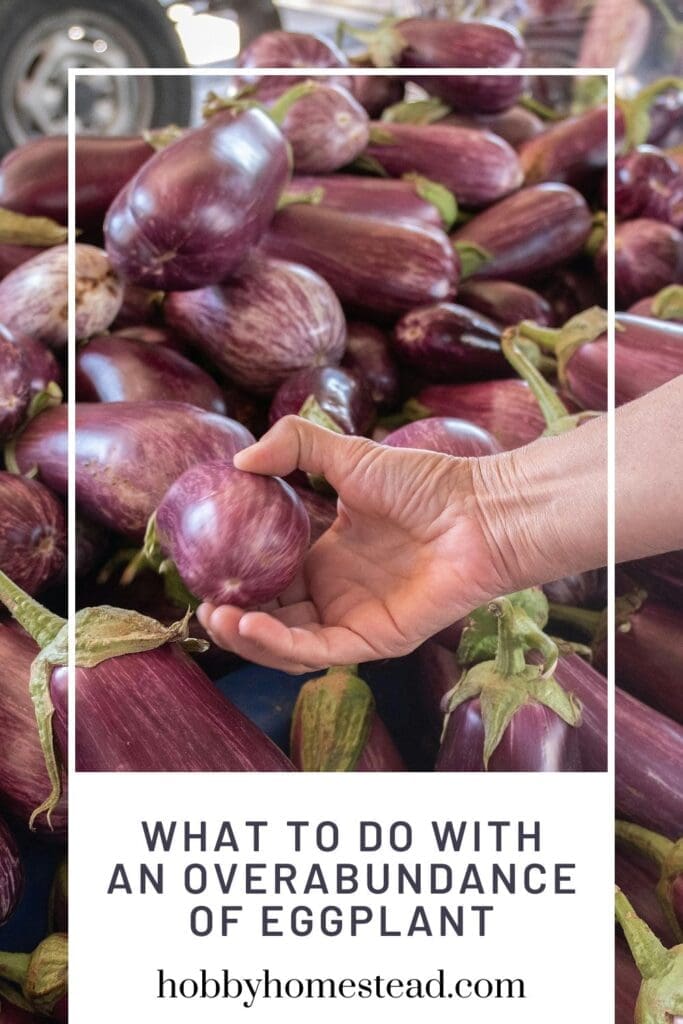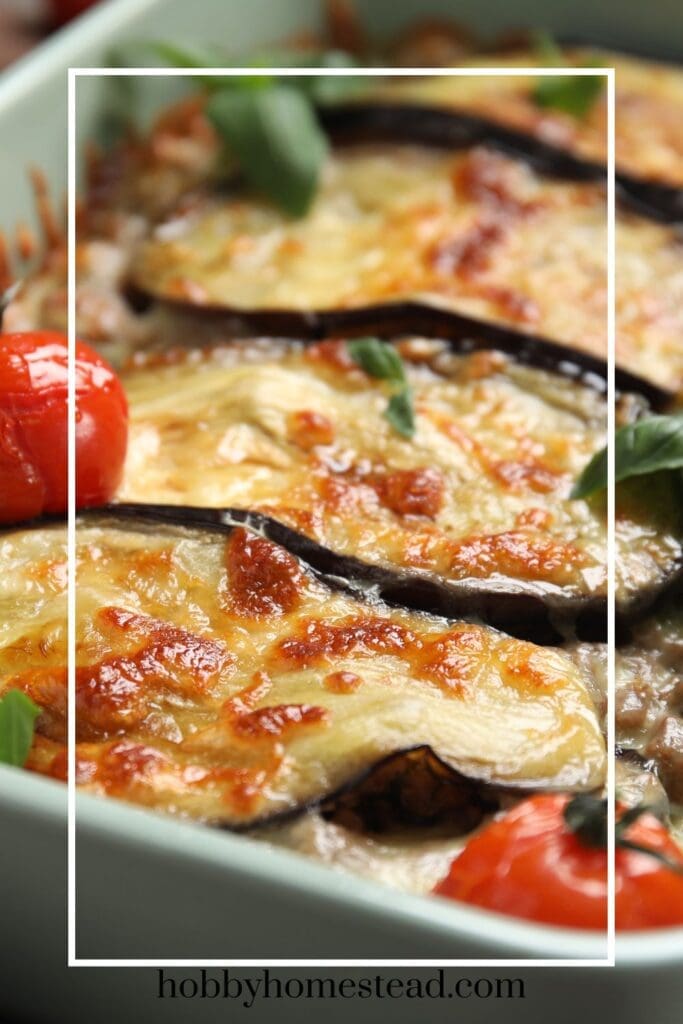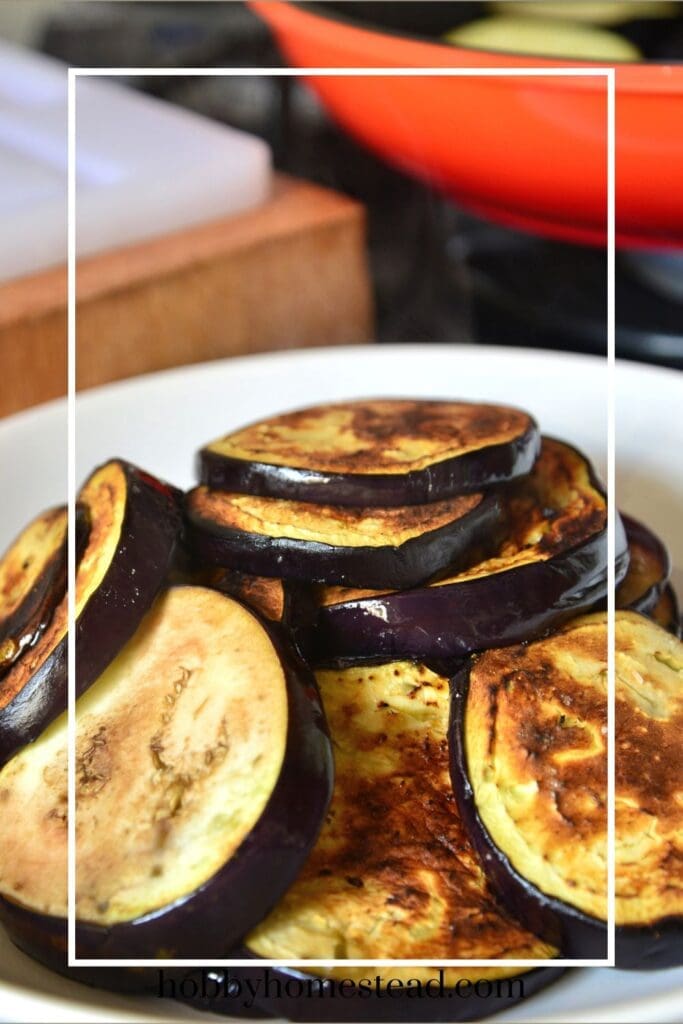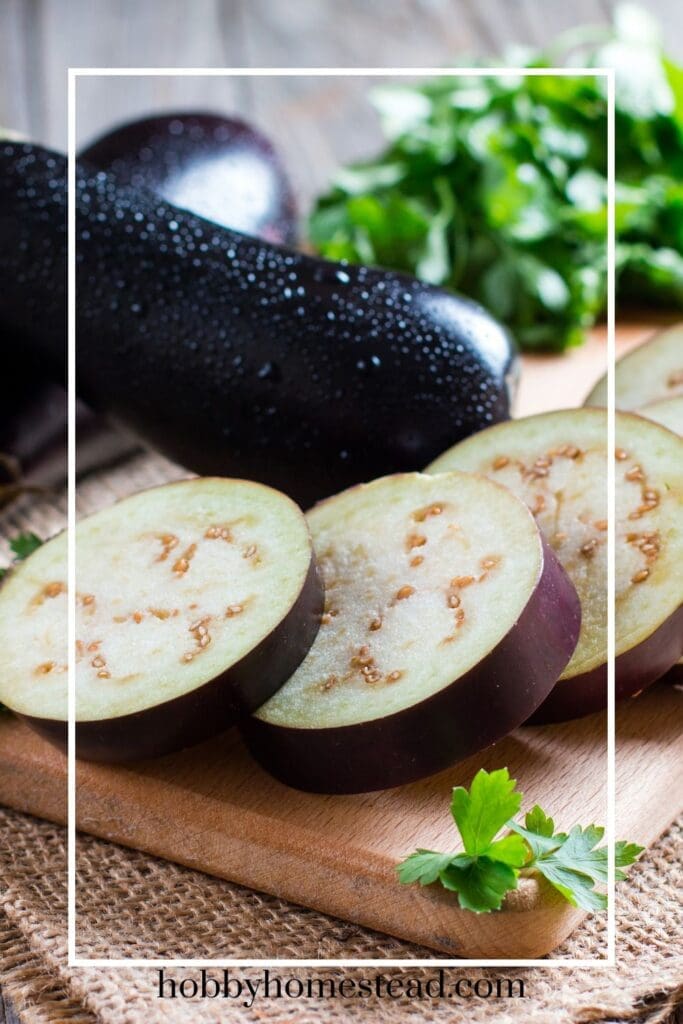What to Do with an Overabundance of Eggplant is the question every gardener and home cook faces when those glossy purple beauties start taking over the kitchen. Luckily, there are so many delicious and creative ways to enjoy them.
If you’re anything like me, there are times when your garden, or local farmers’ market, just overwhelms you with eggplants. From Japanese eggplants to classic Italian varieties, baby eggplants, or even the large American eggplant, suddenly your kitchen counter is covered!
Before you start stressing over what to do with all those glossy purple beauties, let me reassure you: there are so many delicious ways to use them, and I’m here to share them with you.

So, What to Do with All Those Eggplants?
1. Roast or Grill Them for Maximum Flavor
One of my favorite ways to enjoy eggplant is roasting or grilling. Sliced into rounds or lengthwise, brushed with olive oil, sprinkled with salt, and tossed with your favorite herbs, eggplant develops a rich, smoky flavor.
Japanese and Thai eggplants are perfect for grilling because their thinner skin and fewer seeds make them tender and less bitter. Try serving roasted eggplant as a side dish, in sandwiches, or even as a base for a veggie-packed flatbread.
2. Make Classic Eggplant Parmesan
For Italian comfort food, you can’t go wrong with eggplant Parmesan. Slice large Italian or Sicilian eggplants, bread them, and bake or fry until golden.
Layer with tomato sauce, fresh basil, and mozzarella for a dish that’s hearty, satisfying, and perfect for feeding a crowd. You can even use thinner slices of Asian eggplant for a lighter version that still packs plenty of flavor.
3. Stir-Fries, Curries, and Ratatouille
Eggplant is a superstar in many global cuisines. Thai and Indian eggplants shine in curries because they soak up flavors beautifully.
Dice them for a stir-fry with garlic, soy sauce, and ginger, or simmer them in a rich tomato-based curry. And of course, a classic French ratatouille with a mix of zucchini, bell peppers, onions, and tomato pairs wonderfully with those tender Italian eggplants.
4. Pickle or Preserve for Later
If you truly have too many eggplants to eat right away, consider pickling or making spreads.
Baba ganoush, a smoky roasted eggplant dip, freezes well and is great on sandwiches, crackers, or as a side with grilled meats. Pickled baby eggplants make a tangy, crunchy snack or salad topper, while homemade eggplant relish can jazz up burgers, wraps, or pasta dishes.

5. Bake Into Unexpected Dishes
Eggplant can even make desserts more nutritious! Okay, maybe not sweet desserts… but they work beautifully in baked casseroles, lasagna, or even stuffed vegetable dishes.
Hollow out baby eggplants or larger varieties and fill them with rice, quinoa, ground meat, or beans for a wholesome, crowd-pleasing meal.
6. Dehydrate or Freeze for Year-Round Use
If you’re worried about the shelf life of your harvest, dehydrating eggplant is a great way to preserve it. Slice thin, season, and dry in the oven or a food dehydrator.
Store in airtight containers to add to soups, pasta dishes, or casseroles later. Freezing roasted or cooked eggplant is another smart option—perfect for when you want a quick meal without letting all that hard work go to waste.
7. Fun Tips for Using Different Types of Eggplant
- Japanese and Thai eggplants. Best for stir-fries, curries, and grilling because of their thin skin and tender flesh.
- Italian and Sicilian eggplants. Great for baking, roasting, and eggplant Parmesan.
- American eggplant. Large and hearty, perfect for stuffing, grilling, and slow-cooked dishes.
- Baby eggplants. Ideal for pickling, roasting whole, or making appetizers.
- Asian eggplants. Sweet and tender, excellent in stir-fry dishes or roasted as a side.

How to Grill Eggplant in the Oven
Ingredients:
- Eggplants (any type—Japanese, Italian, or American)
- Olive oil
- Salt
- Pepper
- Optional: garlic powder, smoked paprika, or your favorite herbs
Instructions:
- Preheat the Oven:
Set your oven to 450°F (230°C) and place a baking sheet inside to heat slightly. This helps mimic a grill by giving a hot surface for searing. - Prepare the Eggplant:
Wash and dry the eggplant.
Slice into rounds (½ inch thick) or lengthwise slices. Thinner slices cook faster and are great for sandwiches or stacking.
Brush both sides lightly with olive oil. Sprinkle with salt, pepper, and optional seasonings.
- Arrange on a Baking Sheet:
Place the eggplant slices on the preheated baking sheet in a single layer. Make sure slices aren’t overlapping, so they roast evenly. - Bake (Grill) the Eggplant:
Bake for 15-20 minutes, flipping halfway through. The eggplant should be golden brown with tender flesh.
For extra “grill marks,” you can use a broiler for the last 2-3 minutes on each side, watching carefully to avoid burning.
- Serve:
Serve immediately as a side dish, in sandwiches, over pasta, or use in dips.
Recipe Tips for Success:
- Thinner skin eggplants like Japanese or Thai eggplants require less oil and cook faster.
- Fewer seeds mean less bitterness, so smaller varieties often taste sweeter when roasted.
- Don’t overcrowd the pan. This helps the slices brown instead of steaming.
- Add a splash of balsamic vinegar or sprinkle with fresh herbs after baking for extra flavor.
How to Store Eggplant
1. At Room Temperature (Short-Term Storage):
- Eggplants are sensitive to cold and can develop brown spots if refrigerated too early.
- Keep uncut eggplants at room temperature, ideally in a cool, dry spot away from direct sunlight.
- They’ll stay fresh for 1-2 days this way.
2. In the Refrigerator (Longer Storage):
- If you can’t use them within a day or two, store eggplants in the fridge.
- Place them in the crisper drawer in a perforated plastic bag or wrapped loosely in a paper towel to reduce moisture.
- Try to keep them away from ethylene-producing fruits like bananas, apples, or tomatoes, as this can cause eggplant to spoil faster.
- Stored this way, they last about 5-7 days.
3. After Cutting or Cooking:
- Raw: Wrap cut pieces in plastic wrap or store in an airtight container. Use within 1-2 days.
- Cooked: Store roasted, grilled, or sautéed eggplant in an airtight container in the fridge for 3-4 days.
4. Freezing Eggplant (For Long-Term Storage):
- Eggplant freezes best after cooking, either roasted or blanched.
- Slice or cube, cook lightly (roasting, steaming, or sautéing), then cool completely.
- Place in an airtight container or freezer bag, and label with the date.
- Frozen eggplant lasts up to 6 months and is great for casseroles, dips, or soups.
5. Pickling or Preserving:
- Another way to keep an overabundance of eggplant is by making pickles, relishes, or spreads like baba ganoush, which can be stored in the fridge for weeks or canned for longer storage.
How Long Does Cooked Eggplant Last in the Refrigerator?
Cooked eggplant can last in the fridge for about 3–4 days when stored properly in an airtight container.
Tips to maximize freshness:
- Let it cool completely before storing to prevent excess moisture buildup.
- Keep it in a sealed container to avoid absorbing odors from other foods.
- Label it with the date cooked, so you know when to use it by.
If you won’t eat it within 3–4 days, consider freezing cooked eggplant—it can last up to 6 months in the freezer and works well for casseroles, dips, and soups.
Signs an Eggplant Is Bad
1. Appearance:
- Wrinkled, dull skin. Fresh eggplants have shiny, firm skin. Wrinkles or a faded color are signs it’s aging.
- Soft spots or blemishes. Large brown or black spots, mushy areas, or cuts that look discolored are signs of spoilage.
- Mold. White or green mold, especially around the stem or on the skin, means it’s time to toss it.
2. Texture:
- Soft or spongy flesh: When you press the eggplant gently, it should feel firm but give slightly. If it feels very soft, squishy, or collapsed, it’s past its prime.
- Excess moisture or sliminess: This indicates the eggplant is breaking down and is no longer good to eat.
3. Smell:
- Fresh eggplants have a very mild, neutral smell.
- If it smells sour, musty, or off in any way, it’s a bad eggplant and should be discarded.
4. Cut Eggplant:
- Once cut, eggplant should be used quickly.
- Brown or black flesh that doesn’t look fresh or smells unpleasant means it’s no longer good.
Quick Tip: If in doubt, it’s safer to toss it. Eating spoiled eggplant can cause stomach upset.
Are Eggplant Seeds Edible?
In short, seeds are completely safe to eat and part of the natural eggplant structure. Baby and Asian eggplants naturally have fewer seeds, which is one reason they’re so tender and mild.

Eggplant Seeds Facts
- Young vs. Mature Eggplants:
Young, small, or baby eggplants have very few seeds, and they’re tender and barely noticeable.
Larger or older eggplants may have more seeds, which can sometimes taste slightly bitter.
- Texture and Flavor:
Seeds are soft in most eggplants, but in older, larger varieties, they can be a little tougher.
Some people notice a slight bitterness if there are lots of seeds, especially in American eggplants or very mature fruits.
- Preparation Tips:
To reduce bitterness, salt and drain slices of large eggplants before cooking. This draws out moisture and some of the compounds that make seeds taste bitter.
Cooking methods like roasting, grilling, or sautéing generally make seeds soft and unnoticeable.
Using Your Eggplant
Eggplant is versatile, forgiving, and surprisingly easy to store when you know how. With just a little prep, you can enjoy fresh, seasonal dishes that highlight its unique texture and flavor.
Whether you’re grilling, baking, pickling, or stuffing, there’s no shortage of ways to enjoy every last eggplant from your garden or market haul.
So next time your kitchen is overflowing, take a deep breath and start experimenting. Between curries, roasted sides, dips, and stuffed eggplants, you’ll never get bored.


